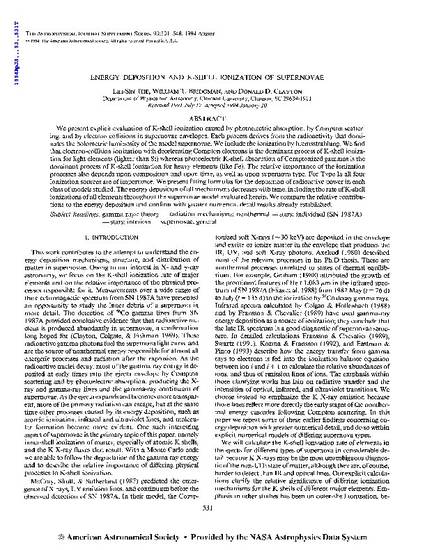
We present explicit evaluation of K-shell ionization caused by photoelectric absorption, by Compton scattering, and by electron collisions in supernovae envelopes. Each process derives from the radioactivity that dominates the bolometric luminosity of the model supernovae. We include the ionization by bremsstrahlung. We find that electron-collision ionization with decelerating Compton electrons is the dominant process of K-shell ionization for light elements (lighter than Si) whereas photoelectric K-shell absorption of Comptonized gammas is the dominant process of K-shell ionization for heavy elements (like Fe). The relative importance of the ionization processes also depends upon composition and upon time, as well as upon supernova type. For Type Ia all four ionization sources are of importance. We present fitting formulas for the deposition of radioactive power in each class of models studied. The energy deposition of all mechanisms decreases with time, including the rate of K-shell ionizations of all elements throughout the supernovae model evaluated herein. We compare the relative contributions to the energy deposition and confirm with greater numerical detail results already established.
